Attachment 2, 2018-2023
Wereldmuseum Amsterdam (NL)
Someone Is Getting Rich
20 April 2023 – 4 January 2024
Curated by Carrie Pilto

Attachment 2 (study, work-in-progress), 2018-2023
HD video, stereo sound, 24.37 min
The work of Femke Herregraven (b. 1982) traverses global finance and geopolitics. Based in Amsterdam, she investigates the material realities, geographies, and value systems carved out by financial technologies and infrastructures. Her multi-form creations focus on the effects of these abstract value systems on historiography and individual lives.
In this video essay commissioned for the exhibition, she brings into conversation two landscapes haunted by 18th-19th century Dutch investments in slavery: Elswout, the idyllic former country estate of financier Johanna Borski, now a national park, and plantations along the Mississippi River in Louisiana, with their legacy of environmental racism.
Borski (better known as the ‘Widow Borski’) is celebrated today as a role model for Dutch female entrepreneurs. In Herregraven’s eyes, however, her and her husband’s co-financing with Hope & Co. of the Louisiana Purchase and the Citizens’ Bank of Louisiana (which specialised in plantation credit) shows a more complicated and troubling figure: her emancipation and entrepreneurship as a woman in the Netherlands were underpinned by the enslavement and exploitation of people elsewhere. The value that was extracted from the lands of the plantations and the bodies of the enslaved people in Louisiana was – through her overseas banking activities – distributed to Elswout. Connecting the two distant landscapes is a musical composition that voices the names of enslaved people who became the property of the Citizens’ Bank of Louisiana, now part of JP Morgan Chase. “Nelson, Philip, Sylvester, Sally and her two children…” and hundreds of others, as well as many “unnamed individuals”, were inscribed as collateral for defaulted plantation loans. Listed by parish in the bank’s books, Herregraven retrieved their names from an obscure online server, compiled in a pdf called: Attachment 2.
The work-in-progress gives a glimpse into Herregraven’s ongoing film, music, and spoken word project made in close collaboration with composer Dennis W. Thompson II and poet Jörgen Gario. The artistic research is interpreted and reverberated through the bodies and voices of performers, namely: Cindica Rouse, soprano; Deborah Gomez, alto; Tez Thompson, tenor; Jules Hagens, bass; Irene Cancer Navarro, cello; Ania Brzezinska, trumpet and percussion; Hassie Dune, percussion; Dennis W. Thompson II, piano and guitar; and Jörgen Gario, spoken word. Uprooted trees on the former Borski estate, majestic and fallen, serve as a backdrop for them to honour the names and lives of those reduced to fuel for colonial capitalism.
In the film’s epilogue, in a preview of work to come, the past is still present: petrochemical plants now occupy the plantation sites, poisoning the lands and communities of the enslaved’s descendants, stoking the fires of the climate crisis. (Outside the film, local activists petition JP Morgan Chase to divest from such firms.) Leaving Gario to wonder out loud: “… healthy and free, we ask, when will we, when will we…”
––––––
Music by Dennis W. Thompson II
Text ‘Fire in the Clouds’ written en performed by Jörgen Gario UNOM
Music performed by Cindica Toppenberg-Rouse, Deborah Gomezi, Tez Thompson, Jules Hagens, Dennis Thompson II, Irene Cancer Navarro, Ania Brzezinska, and Hassie Dune
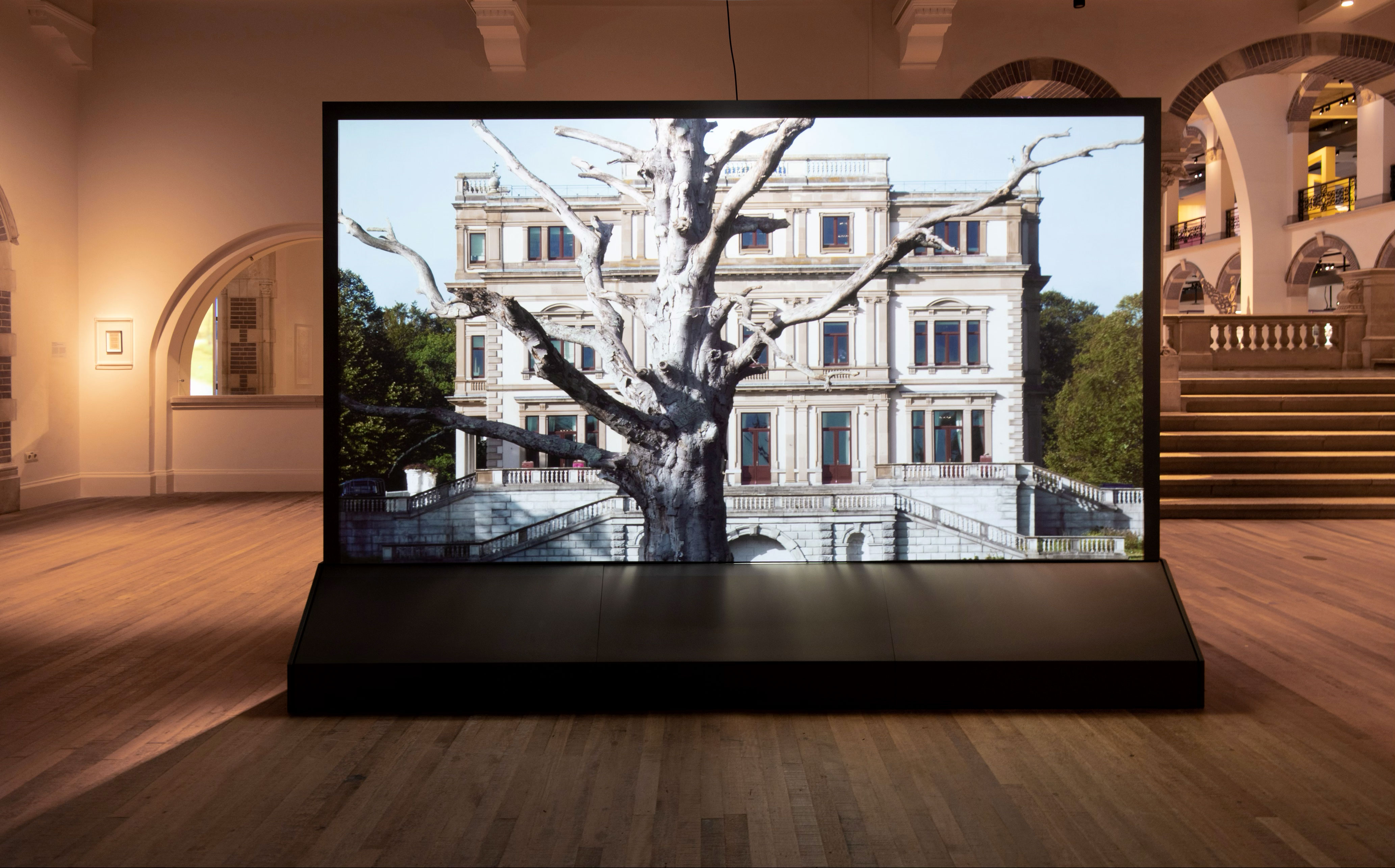







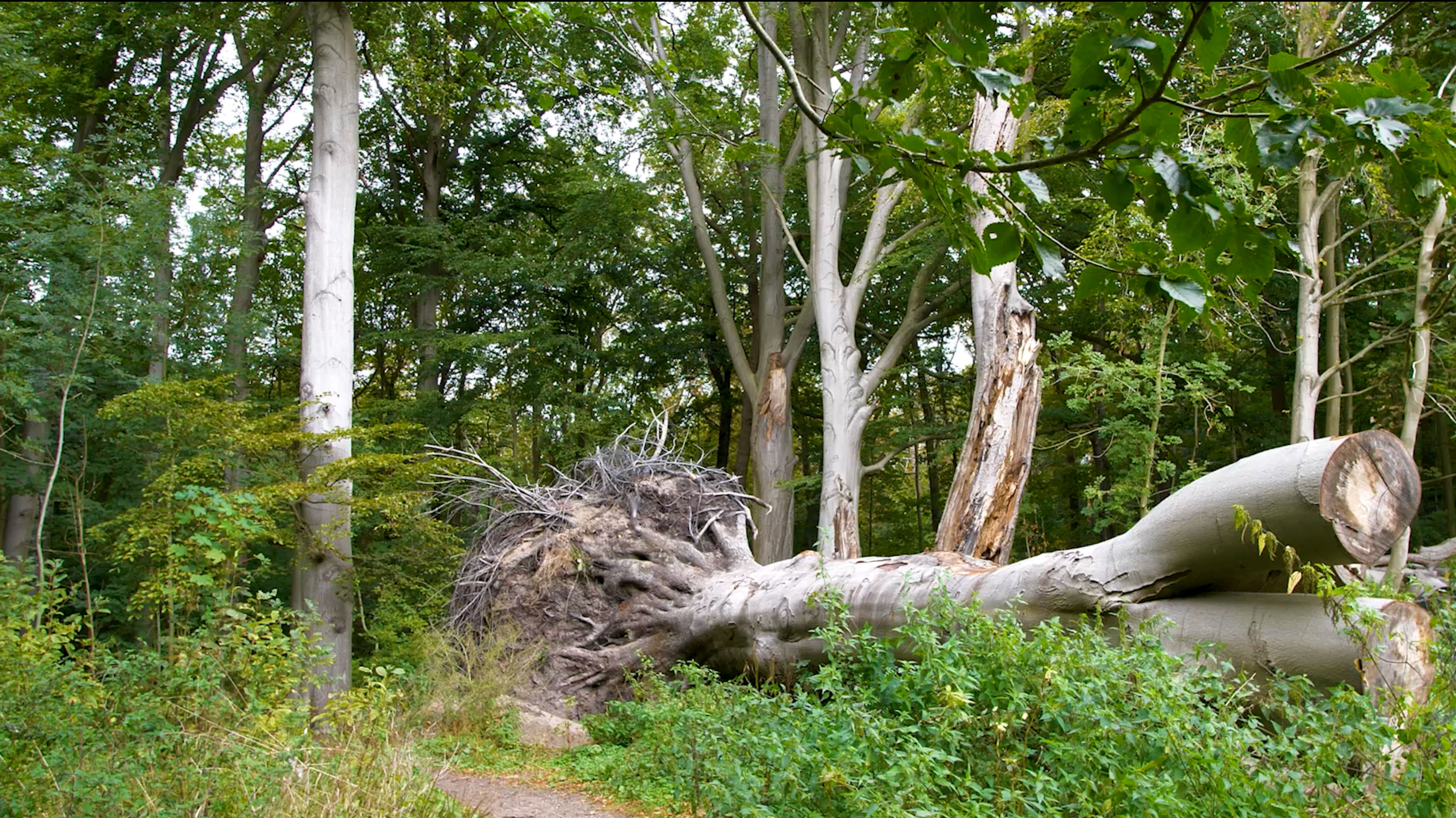
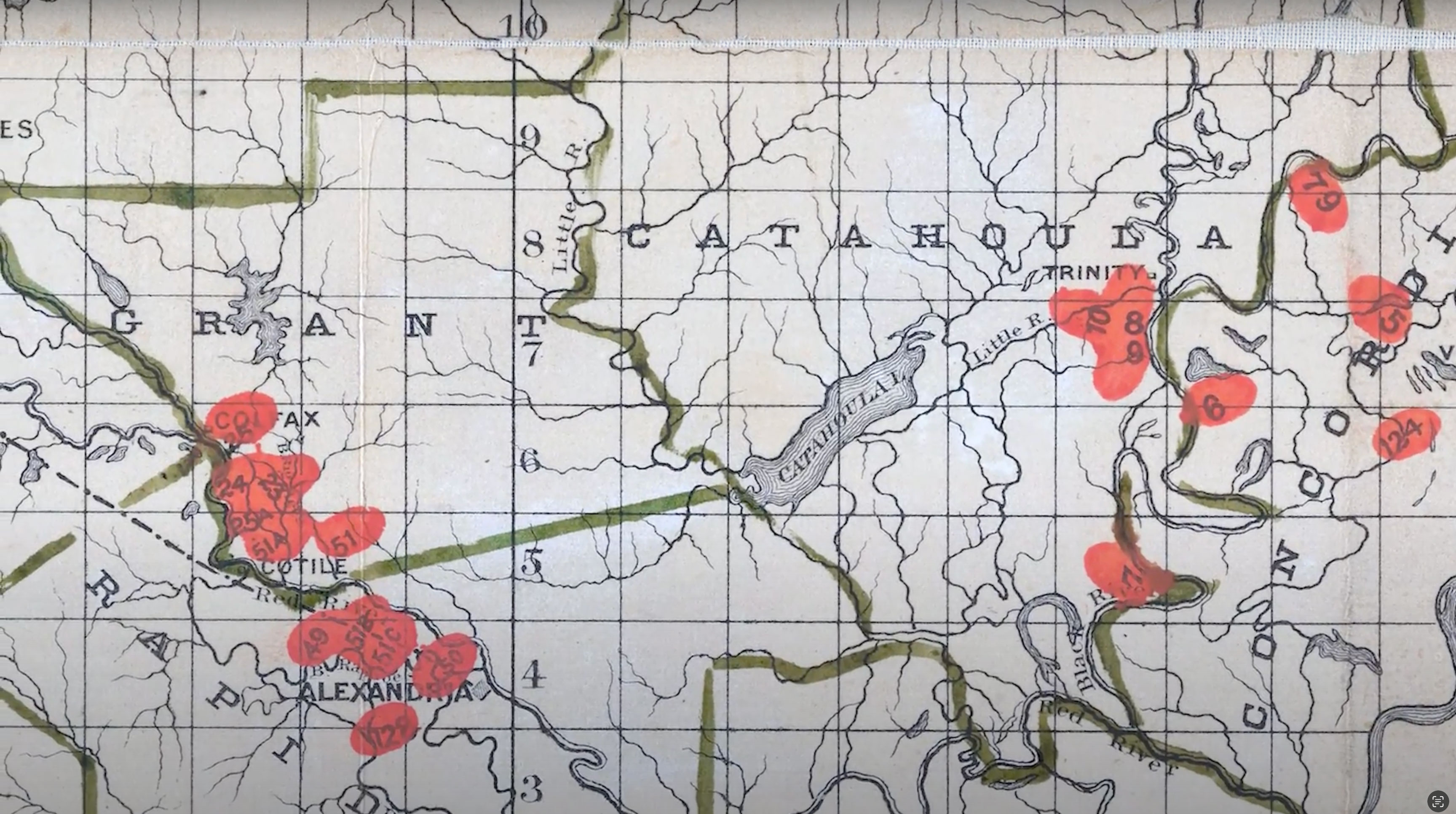

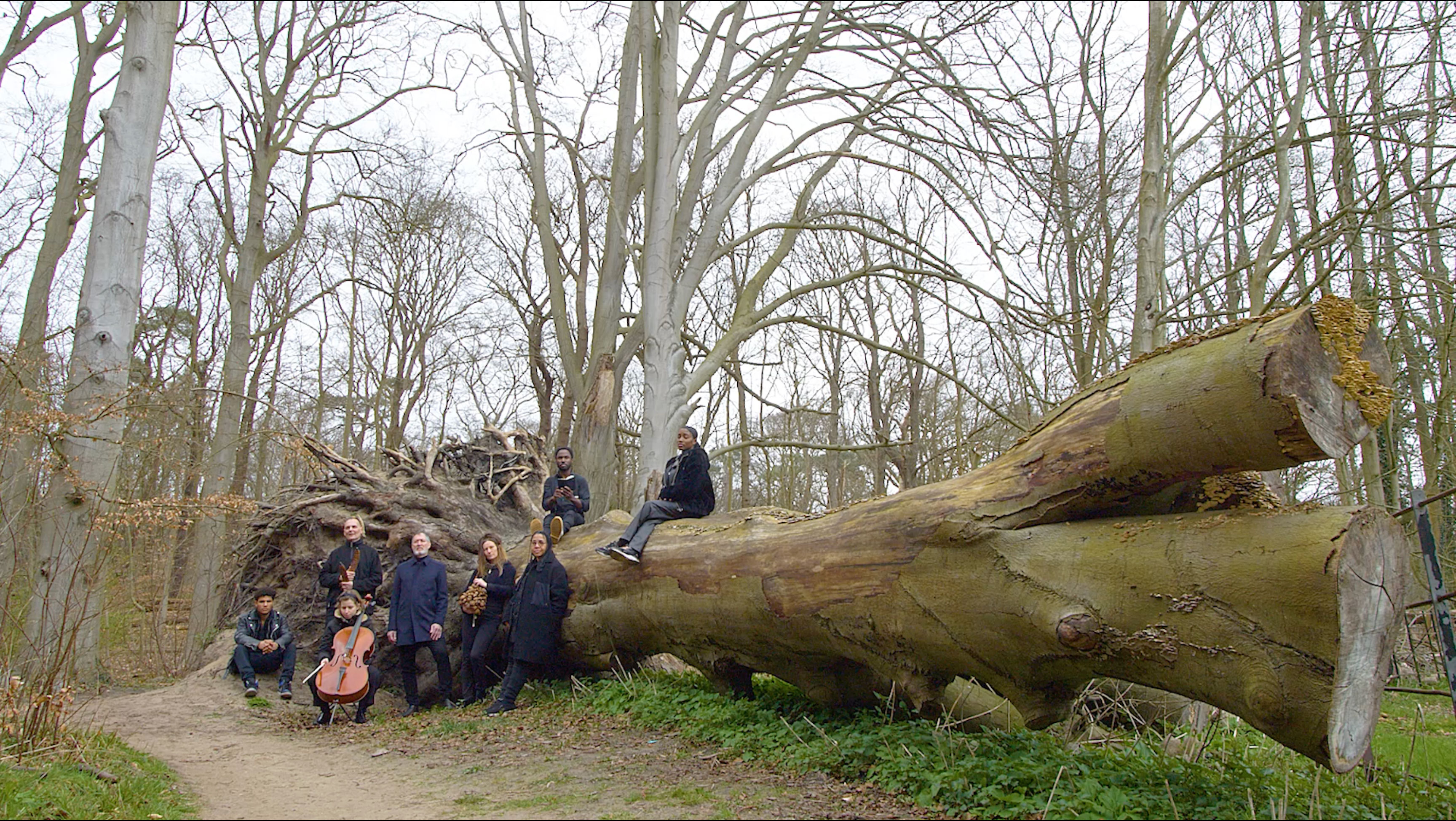


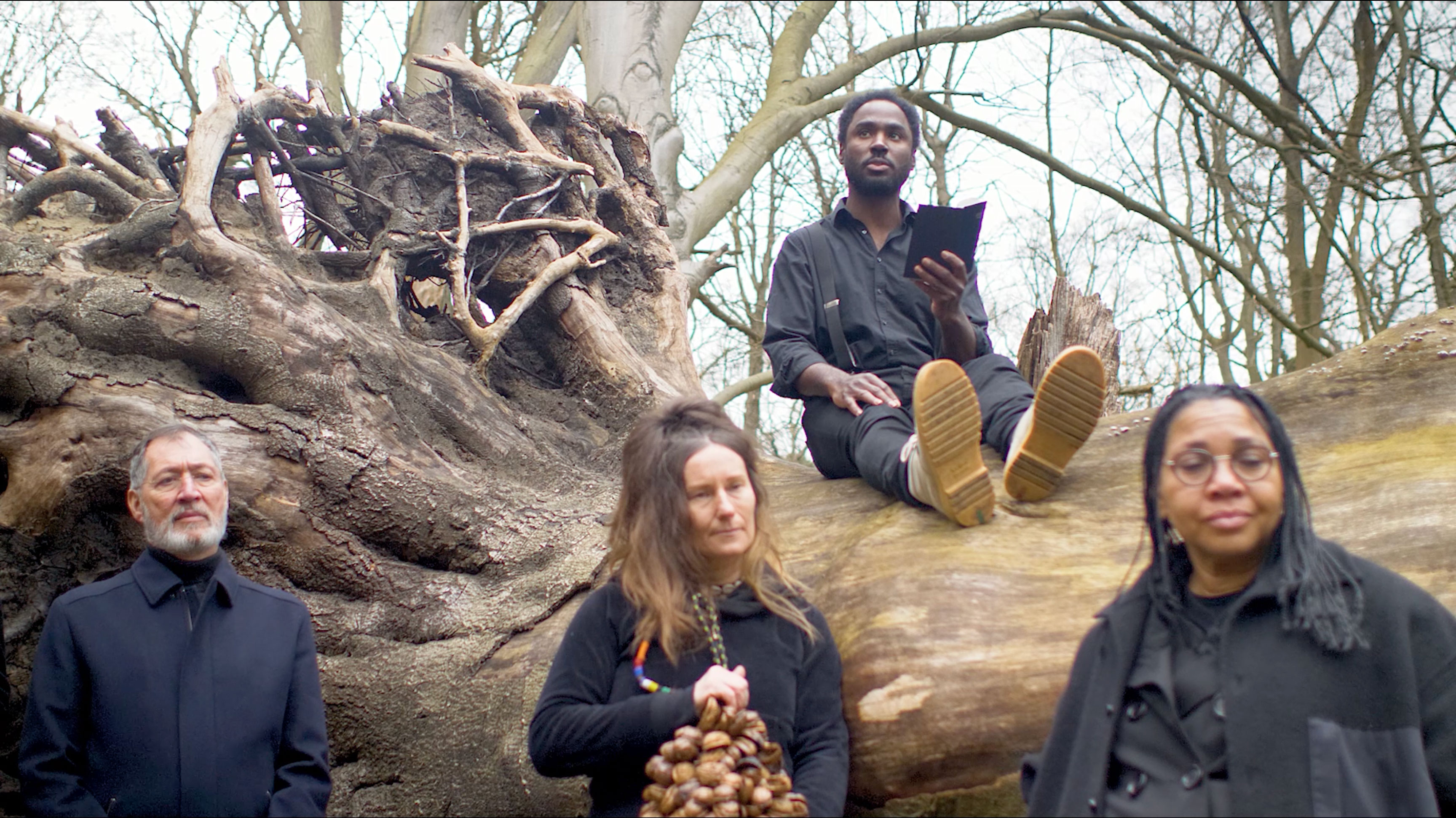




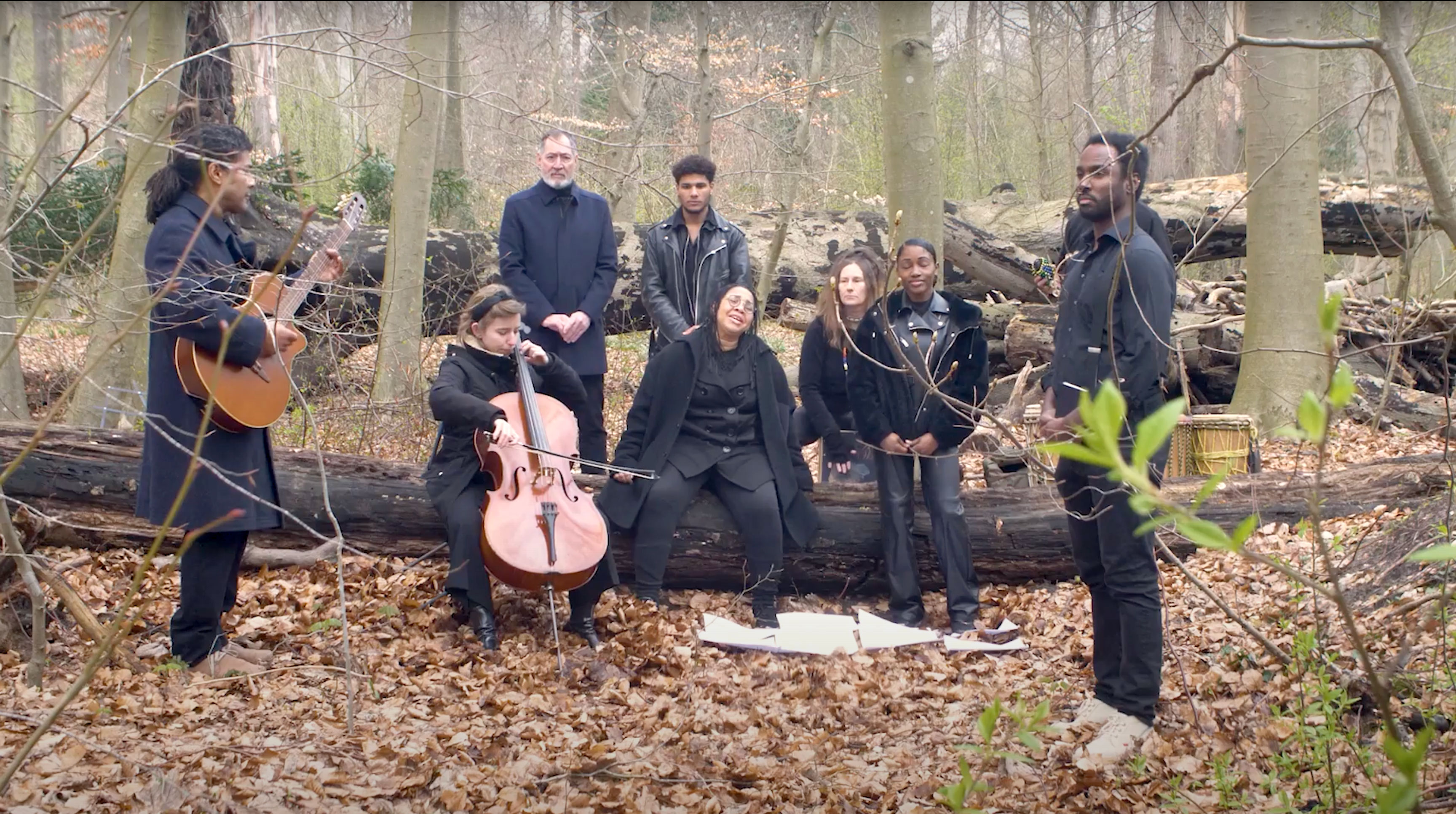

Credits
Camera – David Djindjikhachvili
Sound recording – Benny Nilsen
Made possible – De Nederlandse Bank
Thanks to Staatsbosbeheer – Buitenplaats Elswout
Archival material – Noord-Hollands Archief, Louisiana Digital Library
Thank you – Carrie Pilto, Wayne Modest, Lonnie van Brummelen, Annemarie de Wildt, Pepijn Brandon, Coy Wierda, Flavia Dzodan, Sandberg Instituut